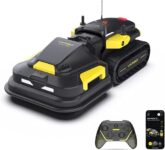
YARBO Lawn Mower Review – Modular Robotic 6-Acre Model
YARBO Lawn Mower Review – Pro-grade navigation and modular versatility for up to 6 acres, built for big, hilly properties (not impulse buyers).
For owners of large, irregular properties, mowing is less a weekend chore and more a recurring logistical headache. Steep slopes, dense landscaping, and hidden obstacles make conventional mowers inefficient or unsafe, and hiring help quickly becomes expensive.
The YARBO Robot Lawn Mower presents a modular, pro-grade answer: RTK positioning, AI vision and radar, and patented tracked drive that tackles up to 70% slopes, plus a 20‑inch deck with 1.2″–4.0″ cutting height for precision across roughly 6 acres. It feels engineered for performance and expandability, but it’s sized—and priced (~$4999)—for professional or service-level use, with some setup and optional-module costs to consider.
YARBO Modular Robot Lawn Mower (6 Acres)
It offers a compelling mix of precision navigation and modular utility that makes large, complicated properties easier to maintain. The machine is engineered for performance and expandability, but buyers should expect a professional-level price and some setup overhead.
YARBO Robot Mower Review: The Most Advanced Robotic Mower Yet
YARBO Robot Lawn Mower — In-depth description
Design overview
The YARBO Robot Lawn Mower is built as a heavy‑duty, modular platform aimed at owners of large properties and commercial users who want to reduce manual mowing time. The machine emphasizes three design priorities: coverage, control, and adaptability. With a 20-inch cutting deck and adjustable blade height from 1.2″ to 4.0″, it balances a professional cut with the ability to tailor grass length for different lawn zones.
Construction highlights:
Key specifications (quick reference)
| Specification | Value |
|---|---|
| Cutting width | 20 inches |
| Adjustable cutting height | 1.2″ – 4.0″ |
| Rated slope capability | Up to 70% |
| Runtime per charge | ≈120 minutes (38.4Ah battery) |
| Coverage capability | Engineered for up to ~6.2 acres |
| Navigation | RTK + 6 HD cameras + 2 ultrasonic radars |
| Weight | 230 pounds |
| Dimensions | 50″D x 27″W x 20″H |
Performance and cutting experience
On lawns that need frequent, even trimming, the YARBO delivers predictable results. The 20″ deck is wider than many domestic robot mowers, which reduces run time and overlapping passes on large turf areas. The adjustable cutting height and micro‑mulching approach help maintain healthy grass and minimize clippings on paths and gathering zones.
Navigation, sensors and obstacle handling
Navigation is a standout area. RTK (Real‑Time Kinematic) positioning gives centimeter‑level accuracy compared with GPS only systems, which improves boundary adherence and route planning. The sensor suite (six HD cameras plus two ultrasonic radars) combined with on‑board AI enables dynamic obstacle detection and intelligent rerouting when small animals, garden furniture, or toys appear in its path.
Practical implications:
Battery, runtime and coverage strategy
A 38.4Ah battery gives roughly two hours of runtime per charge in typical conditions. YARBO states the platform is engineered to manage multi‑acre properties; in practice, the mower covers about 0.25 acres per cycle, then returns to recharge and resume. For very large properties, owners should plan mowing windows across multiple charge cycles or consider supplemental battery or fleet strategies.
Battery considerations:
Modularity and attachments
One of the product’s defining strengths is its modular design. The core platform accepts seasonal and task‑specific modules that expand utility beyond mowing. Optional modules available or announced include leaf blowers, snow blowers, and third‑party attachments such as aerators, tow carts, and spreaders. Switching modules is a tool‑free operation in many cases, designed to reduce downtime between seasons.
Benefits of the modular approach:
Notes and caveats:
Setup, mapping and maintenance
Initial setup requires an installation and mapping routine that is more involved than entry‑level robot mowers. RTK base positioning and mapping of mowing areas and no‑go zones demand care during commissioning, and owners should expect to spend time fine‑tuning boundaries and schedules for optimal performance.
Routine maintenance checklist:
Serviceability and support
Because the unit is heavy and built for demanding jobs, YARBO encourages a professional approach to servicing for non‑technical owners. Replacement parts, blades, and module components are standard replacement items; firmware updates and remote diagnostics are provided through the app and manufacturer support channels.
Who should consider this mower?
Who might look elsewhere?
Final thoughts
YARBO’s robotic platform is best read as an investment in automation and capability rather than a simple homeowner convenience gadget. It pairs the precision of RTK navigation with a modular mechanical design that can be adapted for multiple seasons and tasks. For large properties, or for someone who plans to expand a fleet of attachments over time, the platform’s flexibility and sensor suite set it apart—at the cost of extra setup and higher ownership complexity.

FAQ
Setting up requires more work than consumer robot mowers because of RTK positioning and the need to map multiple mowing areas. The process typically involves placing the RTK base anchor (if required), walking the property for initial mapping, and defining no‑go zones in the app. For large, complex properties, a staged approach—mapping one zone at a time—reduces errors. Professional installation or a careful DIY session are common choices.
The unit uses all‑terrain tracks rather than traditional wheels, which improves traction and stability on steep grades. In practice it will handle very steep sections that many wheeled robots cannot, but performance depends on ground conditions; loose soil, wet turf, or very rutted terrain can still reduce traction and runtime.
No—those seasonal modules are sold separately. The platform is designed to accept multiple attachments, which is a major advantage, but buyers should budget for the base unit plus any additional modules they plan to use.
RTK offers centimeter‑level positioning, which helps the mower stay accurately within boundaries and follow planned paths without drift. That means fewer missed strips, better edge alignment, and less overlap—important on large properties or areas with complicated boundaries.
Routine care includes checking blades (sharpen or replace as needed), cleaning camera lenses and sensor housings, inspecting tracks for debris, and monitoring battery health. The app and manufacturer documentation will list routine intervals; for heavy use properties, parts wear will be faster than on small residential lawns.
It significantly reduces manual mowing time and can handle many seasonal chores with optional modules. However, no robotic platform completely eliminates occasional manual tasks—edging, spot trimming, and certain tight spaces will likely still require human intervention.
Yes—owners can control the mower through a dedicated app or remote control. The system supports scheduling, mapping of multiple zones, and creating no‑go areas, giving flexibility to run the mower automatically or command it manually when needed.
Upfront cost is higher than consumer robot mowers and creating a fully modular setup (mower + snow + leaf + other attachments) increases total investment. Factor in replacement blades, battery longevity, and potential professional installation or support for large properties. For users who value time savings and multi‑season utility, the platform can justify the expense over several years.
Yes, Yarbo is an American company. It is based in the United States and focuses on developing innovative outdoor robotic solutions.
Yarbo is capable of mowing up to 6 acres (approximately 25,000 m²) when following its full mowing cycle schedule every 72 hours. For optimal performance, it handles up to 3.5 acres when mowing cycles are spaced every 48 hours.







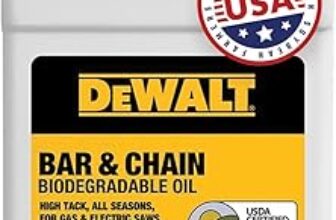
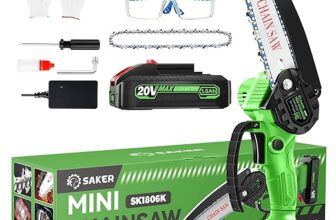
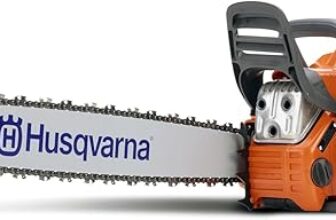
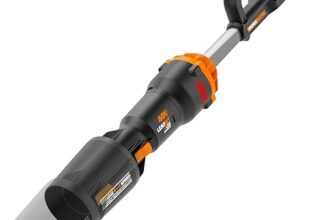

Interesting review — thanks for the deep dive. The modular idea is cool, but that $4,999 price tag feels like a small car 😅
I’m curious how much of that cost is the RTK module vs. the base mower. Also, 230 pounds? That’s hefty for a yard robot. Does the article mention whether you need professional help to move/install it?
Yeah, movers or a small crane might make sense for that weight. I’d also check whether delivery includes setup — Amazon sometimes offers that for heavy items.
Good questions, Emma. The article notes the RTK/navigation hardware and modular attachments are a big part of the cost, and it does recommend professional installation for very large or complex properties due to the weight and setup overhead.
You can also ask local landscapers if they’ll handle setup — might be cheaper than a full pro install. Just be sure they understand RTK/AI navigation.
A few practical thoughts from someone who prototypes stuff:
– Modular design is lovely for field upgrades. If they release a mulcher or dethatching attachment later, you can add it without replacing the whole unit.
– RTK navigation is great for repeatability; it means you can define no-go zones precisely.
– Expect firmware updates: buy-in to a product like this is also buy-in to ongoing software support.
Also: 70% slope is impressive, but test on a small area first — always better to validate safety margins.
RTK can degrade under heavy canopy; the AI vision can help, but dense trees may require alternate positioning of base station or occasional manual overrides.
The review mentions tree canopy as a scenario where RTK signals and vision both may require extra attention, recommending strategic base-station placement or occasional manual mapping.
Would love a follow-up article once you test modular attachments. Those are what make or break long-term usefulness for me.
Agreed — attachments extend the value significantly. But check power draw for extra modules; battery life can drop.
Thanks, Marcus. The article highlights those exact points — modularity and software updates are key advantages, while recommending cautious initial testing on slopes.
RTK makes me think about signal reliability. Are there known issues in dense tree cover?
Thanks for the review — I appreciate the honest take on setup overhead.
A few practical notes from someone who manages large properties:
– Expect to spend a weekend initially mapping and tuning the bot.
– Keep spare blades; modular machines still wear parts like any mower.
– The professional price is ok if it replaces regular contractor visits, but do the math.
Also, little tip: store the unit in a dry garage during extended rainy seasons — electronics + constant moisture is a bad combo.
Do you think a $5k robot pays for itself if you normally pay a lawn service? I’m crunching numbers but unsure about maintenance costs over years.
Great practical advice, Priya — the article echoes your points about spares and sheltered storage. Thanks for adding your experience.
The article suggests buyers consider long-term costs (batteries, blades, occasional professional tune-ups) when evaluating ROI. Good point about resale — modular design may improve future resaleability.
Robert — depends on your service cost. If you pay $100+/visit and need weekly service during the season, it could pay off in 3–5 years. Factor in battery replacement and occasional pro maintenance.
Also factor in the resale value — these machines hold value if well taken care of.
Nice breakdown. 8.7/10 seems fair. I’d want more hands-on battery life numbers before committing.
Looks robust. Cutting width 20″ is decent. Does anyone know typical cycle time per charge on acreage like 1–2 acres? I’m worried about how it handles multiple passes.
I don’t have this model, but with similar robotic mowers the pattern and slope affect battery life a lot. On flat 1–2 acres you might get longer runtime; hills and obstacles drain more battery.
The article didn’t list a specific runtime per charge for acreage scenarios; it emphasized that real-world battery performance will vary with terrain, mowing frequency, and clipping density. For very large lawns, YARBO’s modular battery options (if available) could be worth exploring.
A couple of concerns before I’d pull the trigger:
– Weatherproofing: Is the unit rated for heavy rain? Electronics are sensitive.
– Warranty & support: At $5k I want a solid warranty and local service options.
Anyone know how Yarbo handles returns/warranty through Amazon? 🤔
The review mentions the unit is designed for outdoor use with weather seals, but recommends sheltered storage for prolonged storms. Warranty specifics weren’t detailed in the review — buyers should check the Amazon listing and Yarbo’s official support pages for warranty length and terms.
Amazon often handles initial returns, but manufacturer warranty is separate. Contact Yarbo for extended coverage or local service centers.
If you’re in an area with harsh winters, consider storage and winterization costs too — batteries don’t love cold.
For expensive outdoor equipment, I always buy an extended warranty if available and verify authorized service providers in my area.
Question: how easy is blade replacement on the YARBO? I’m thinking about ongoing maintenance and parts availability.
The review indicates blade and consumable replacement is straightforward but recommends ordering official parts from the manufacturer/merchant to ensure compatibility. Some users reported third-party blades can affect performance.
I saw the expert rating 8.7/10 in the review. Sounds solid, but I’m curious what knocked off the full marks. Was it price, setup complexity, or something else?
Good catch — the review cites the pro-level price and setup overhead as the main deductions. While navigation and modularity are strong, the review expects a learning and integration curve for complex properties.
Also weight and potential need for professional install were noted as minor negatives. Otherwise, performance seemed strong.
And maybe the lack of widespread service centers yet — that’s common for newer brands.
Long comment because I actually own a large property and am considering an automated solution:
1) The 70% slope capability stands out — that could be huge for my back hill.
2) AI vision & RTK sound promising for obstacle avoidance, but I worry about tall grass or leaves confusing sensors.
3) Modular design makes it future-proof if YARBO releases attachments, but again — pricey.
4) The 1.2″–4.0″ cutting range is versatile, though I usually keep grass at ~3″.
5) Setup overhead is my biggest fear: boundary mapping, RTK baseline, firmware tweaks… someone please tell me it’s straightforward 😅
One more note: the article mentions an active user community that shares setup tips and RTK base coordinates — that can shorten the learning curve.
Honestly, if it saves me my Saturday weed-whacking time, I’m sold. But I want noise comparisons to my gas mower first.
For the RTK part: some users set up a base station once and leave it, which reduces ongoing hassle. But yes, initial calibration can be fiddly.
If you go for modular attachments later, double-check how they’re shipped — heavier modules might need a pro to mount them safely.
Thanks for sharing your perspective, Sofia. The article mentions that while basic navigation is fairly plug-and-play for simpler yards, complex terrains and RTK setups can require time and patience. Leaves and very tall, wet grass are noted as occasional challenges for vision-based sensors.
I’d add that regular firmware updates can improve vision performance over time. Manufacturers often tweak the models after field feedback.
So the robot will mow my yard while I sip coffee and pretend I’m in the future? Sign me up. 😂
But seriously — 230 lbs makes me think it’s a tank. Does it get stuck on soft ground? And what if the dog chases it?
Haha — the article mentions the machine’s mass gives it good traction, especially on slopes, but soft, waterlogged ground can be problematic. For pets, AI vision helps with obstacle detection, but owners should monitor initial runs to see how their pets react.
If your yard has soft patches, consider laying down temporary reinforcement or wait for drier conditions. That solves most getting-stuck issues.
Also consider a low-profile boundary if you want to keep pets away from the unit during operation.
Most dogs get curious and then ignore it after a few runs. But supervise first 2–3 operations to be safe.
Looks amazing. If it really can handle 6 acres I’d be tempted. Amazon shipping on big items can be a pain though, anyone had delivery issues?
How loud is this compared to a gas mower? I run mornings and don’t want the whole neighborhood awake.
Also: does the schedule control work via app only or is there an onboard interface?
The article states electric robotic mowers are substantially quieter than gas mowers — typically a fraction of the noise. Scheduling is primarily via app/remote control; there is a basic onboard interface for local control as well.
Quieter for sure. I had a push mower and the difference is night and day when neighbors are around.